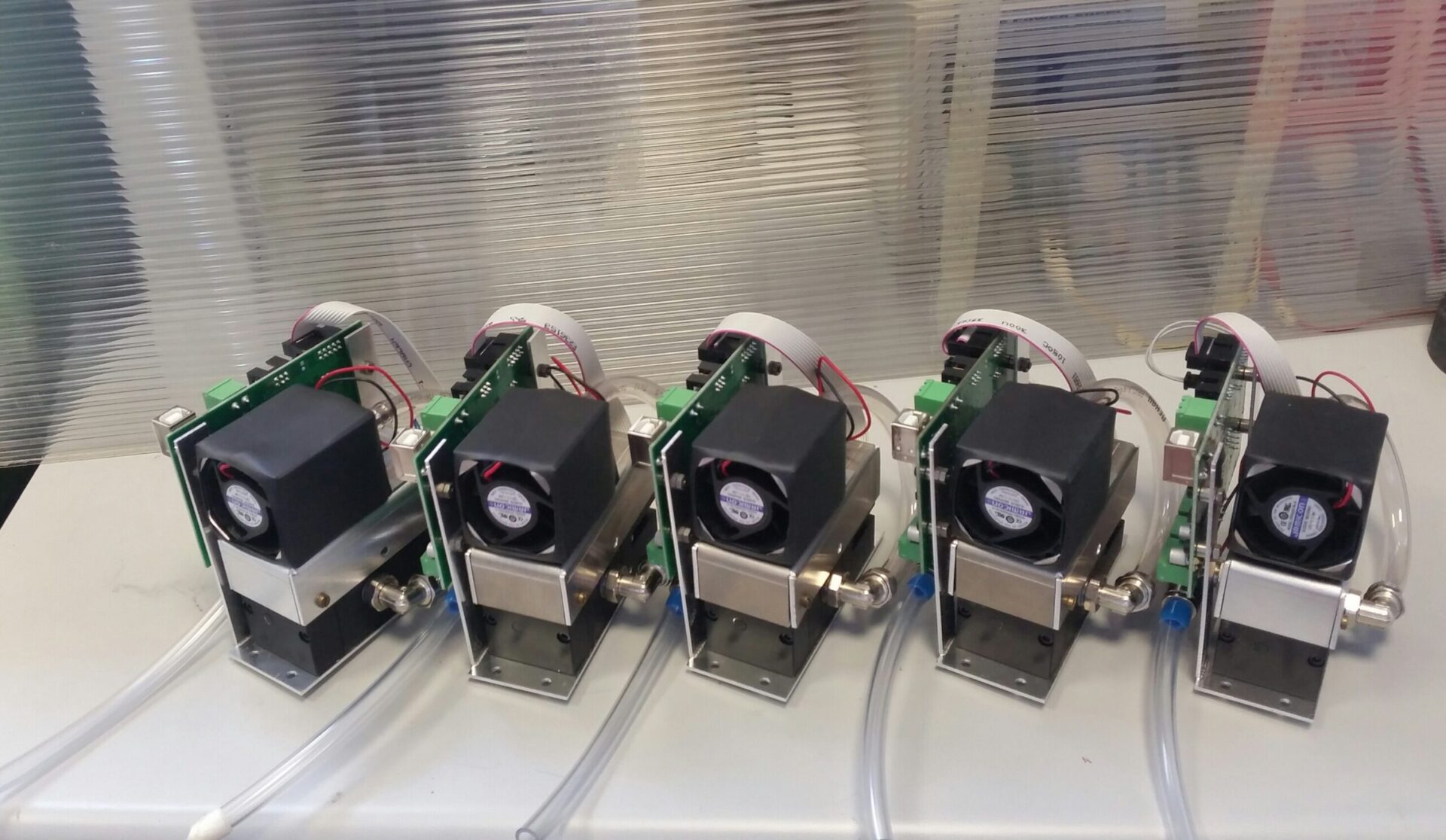Particulate Matter (PM) O.E.M. sensors.
The Qbit OEM Particulate Matter Meter (PM) is an instrument based on “Laser Scattering”, that is the measurement of light scattered by the particulate present in the air sample introduced into an optical interaction cell. This type of measurement allows obtaining a real-time value, i.e. a continuous measurement of the particulate content in the air. However, this measurement is not a direct measurement of the mass of particulate matter present in the air. The quantity of light diffused by the particulate matter is, in fact, proportional to its density in the air with the same physical-chemical properties and particle size distribution of the particulate itself. The conversion of the optical data must be brought back to a measurement of particulate mass through a calibration process. The PM mass value is therefore more accurate the more similar the sample used in the calibration process is to that of the site and time of measurement.

Operating Specifications
| Size | Value | Unit | Notes |
|---|---|---|---|
| Power supply | 5 e 12 | Vdc | |
| Average absorption 5V | <0.5 | W | For control electronics |
| Average consumption 12 V | <2 | W | For laser and fan |
| Measurement time | 1-600 | sec | Adjustable by FW |
| Drift of zero | <0.15 | (μg/m3)/°C | Manual zero calibration available |
Resolution and Accuracy of Measurement Signals
| Size | Value | Unit | Notes |
|---|---|---|---|
| PM signal resolution | 1/4096 | Bottom Scale | (1) |
| PM signal accuracy | <1% | Bottom Scale | (2) Over the entire measuring time range |
| Maximum PM range | 10000 | μg/m3 | (3) Factory settable |
| Temperature resolution | 0.01 | °C | (4) |
| Temperature accuracy | 0.3 | °C | (4) |
| Pressure resolution | 0.01 | kPa | (4) |
| Pressure accuracy | 0.5 | kPa | (4) |
| Rel. Humidity resolution | 0.04 | % | (4) |
| Rel. Humidity accuracy | +/- 2 | % | (4) For humidity values between 20% and 80% |
(1) As indicated at the beginning of this data sheet, the resolution and accuracy data of the PM measurement are relative to the optical signal produced by the particulate sample. The similar specifications on the particulate mass value are derived from a calibration process that is sensitive to the type of sample tested (carbonaceous dust, such as typically winter dust from heating systems results in a higher conversion coefficient than silica dust more typical of summer measurements). The accuracy of the bulk data, at a specific site and in a specific time period, must therefore be evaluated by comparison over an interval of several hours with a gravimetric measurement system (Primary Method).
(2) Measurement accuracy is greater the longer the measurement interval.For measurements longer than 10 seconds, accuracy can reach levels better than 1 part in 103.
(3) The standard range set at the Factory corresponds to a concentration of 1500 μg/m3 at Full Scale. Which yields for what is indicated in (2) a measurement sensitivity better than 2 μg/m3 for measurements over intervals of 10 seconds or more.
(4) Optional
Dimensions
O.E.M. system dimensions (cell+fan+board) 85 mm x 100 mm x 110 mm
Weight 600 g approx.

